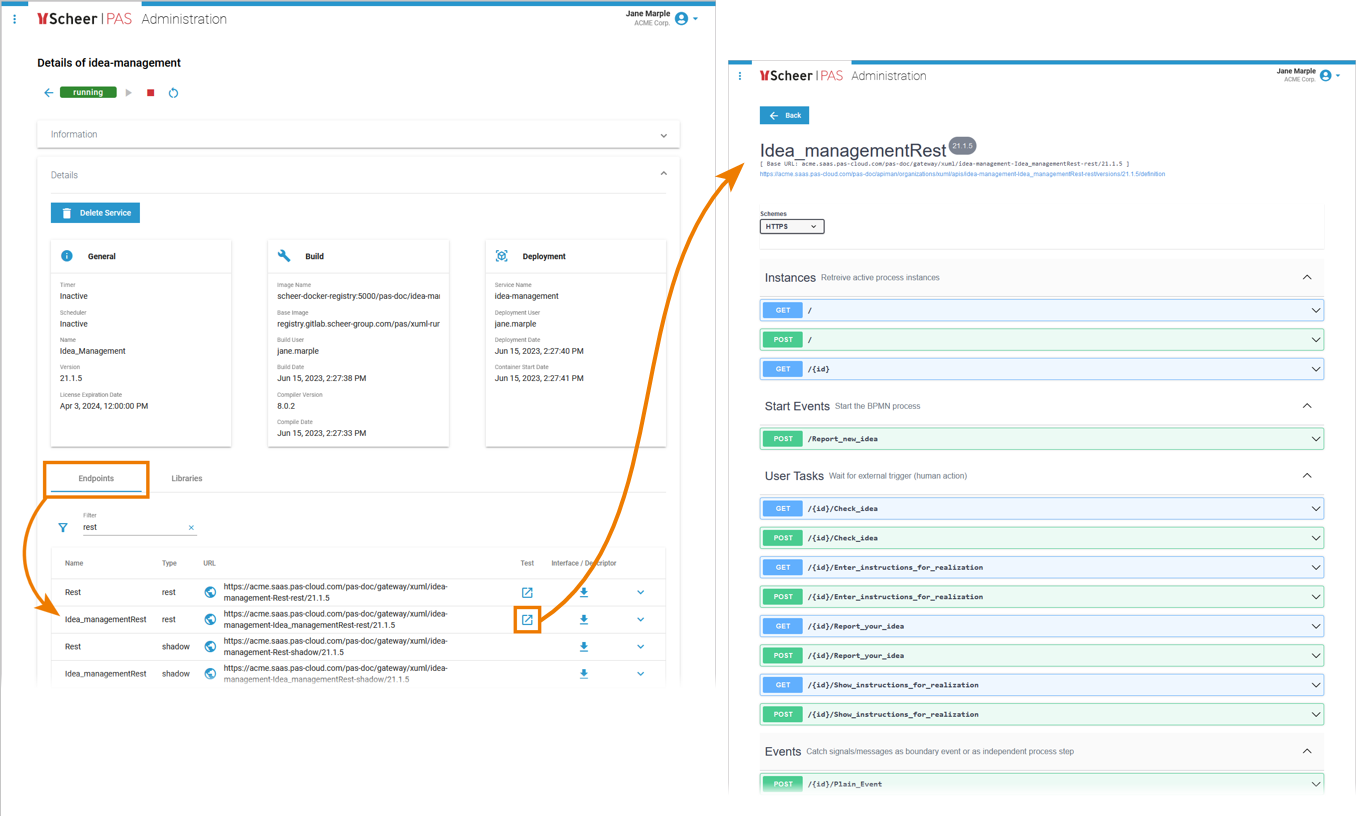The service state machine and the process (sub) state machine as described on xUML Service State Machines are accessible via REST interfaces. You can use these interfaces to get information on the service's/process' states, and to trigger state transitions.
Using the xUML Runtime Interface
The PAS platform features an xUML Runtime API for each service. You can use this interface to obtain information on the states of the service's state machines in general, and to trigger state transitions.
Access to this interface is available via the service details in the PAS Administration, section Details > tab Endpoints:

You can collect information on the persistent state classes, objects and pending events, or send signals like e.g. the Abort signal. The kind of information you can get, partly overlaps with the information you can get from the Using the Service Interface (see below).
Refer to xUML Runtime API Reference in the Administration Guide for a comprehensive list of all available requests.
Using the Service Interface
The BPMN process itself also has a dedicated REST API to gather information on dedicated process instances and their state(s), and to trigger transitions. Access to this interface is available via the service details in the PAS Administration, section Details > tab Endpoints:

As per default, the interface of a BPMN service has two GET requests:
-
One to gather information on active processes:
GET /
This request returns a list of all ids of all active process instances. -
Another to get details of a dedicated process:
GET ({id}
This request returns information on a dedicated process instance identified by their internal process id.
Via POST requests, you can send calls to the BPMN process itself.
-
There is always one POST request per BPMN start event to start the process. This REST call triggers the creation of a process instance, means an instance of the root state machine described on xUML Service State Machines.
In the example above, this would bePOST /Report_new_idea. -
The other POST requests reflect process input, e.g. incoming messages from user tasks (forms), receive tasks, or events.
In the example above, the POST request are related to forms that are displayed during process execution, e.g.
-
POST /{id}/Check_ideasends the decision of the superior to the process. -
POST /{id}/Enter_intructions_for_realizationallows the superior to provide further instructions.
Both example POST requests will trigger the process to continue when it is waiting for user input.
-
Refer to BPMN Process API Reference for an overview on the details of the service API.
Related Content
Related Pages:
